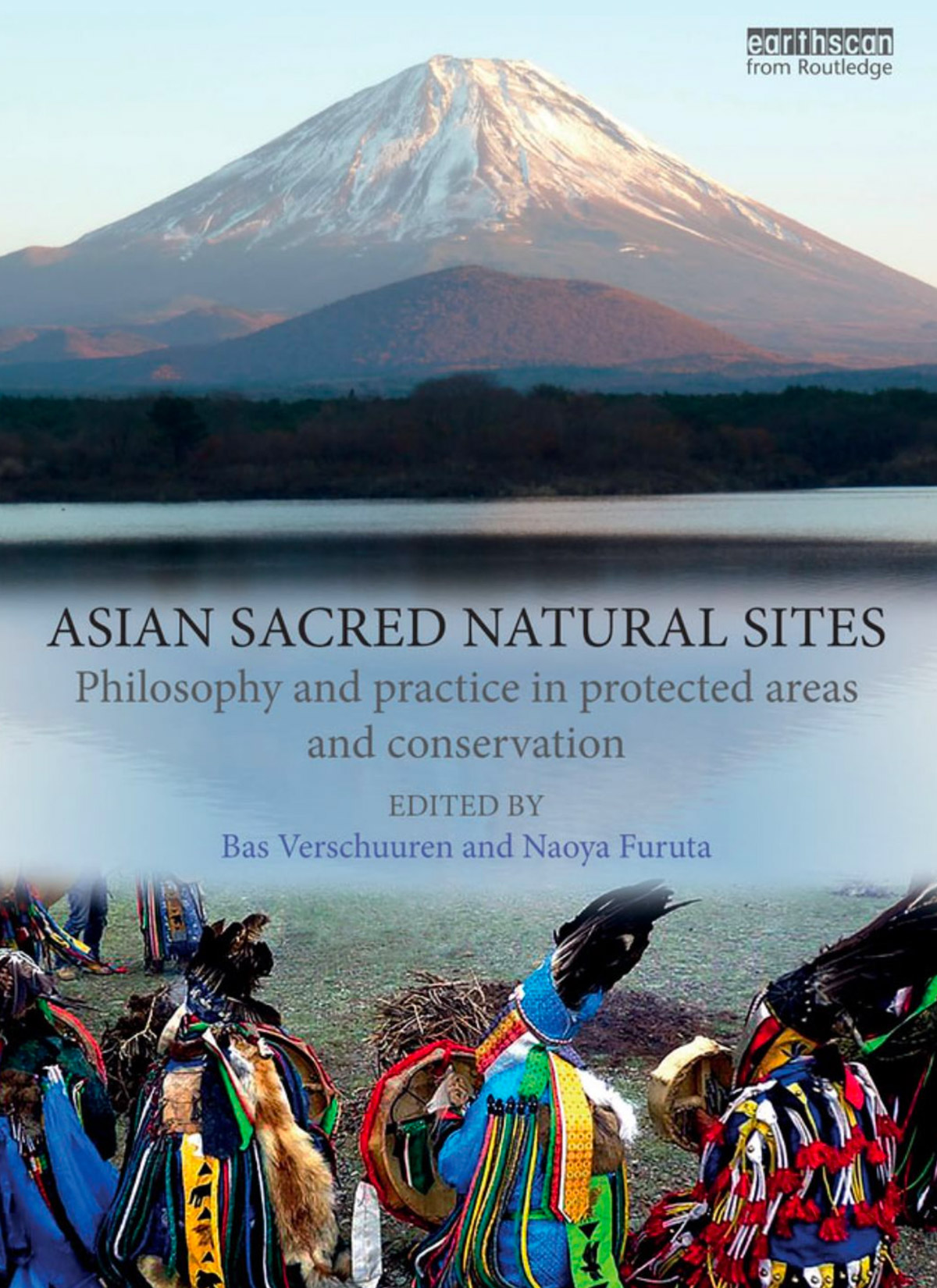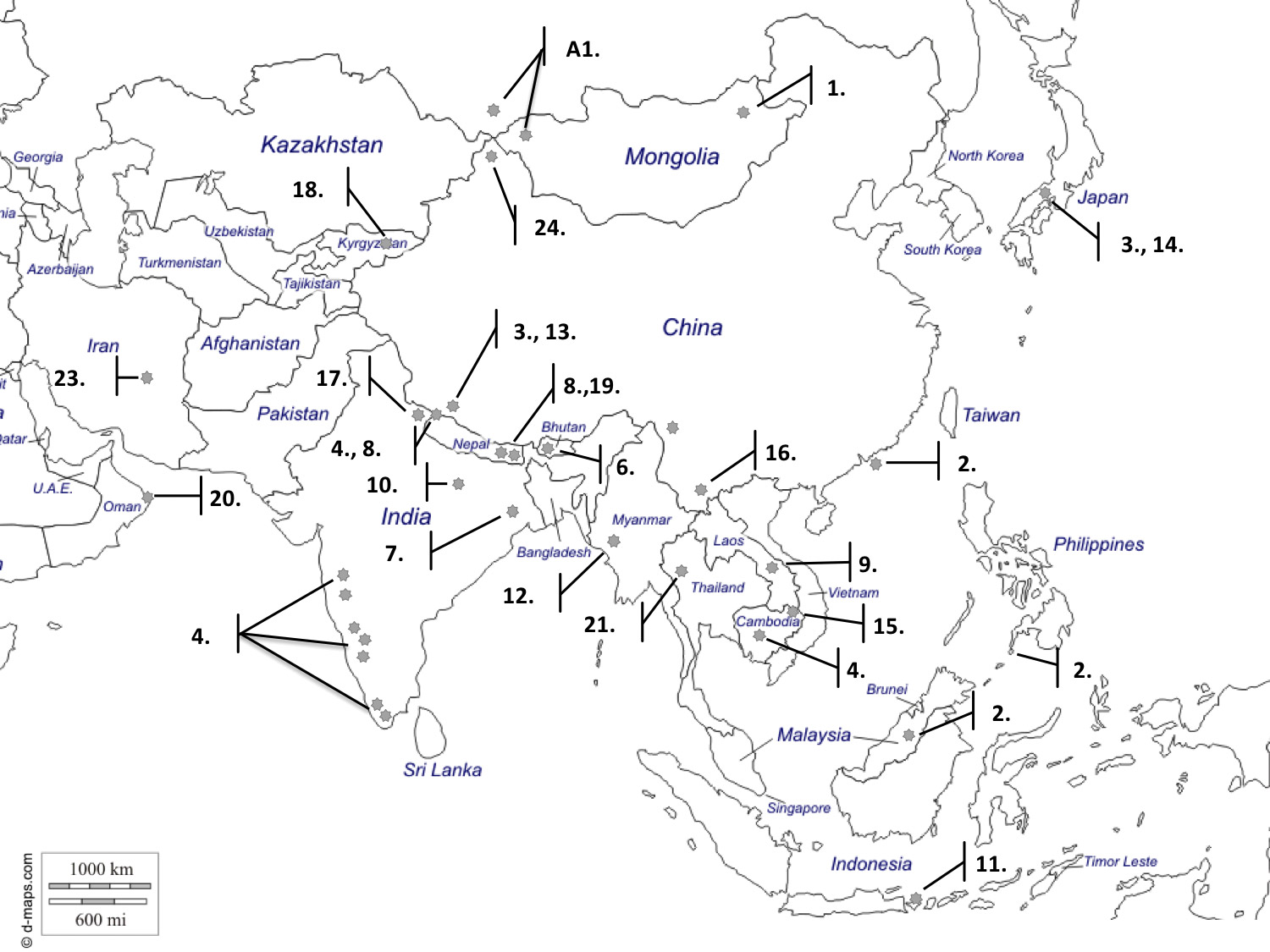Edited by Bas Verschuuren and Naoya Furuta the book contains 24 Chapters contributed by over 50 authors from across the world. The book features 19 case studies covering over 25 countries in Asia. It also goes into the Asian philosophies underpinning conservation throughout Asia and particularly in protected areas. The book also contains a statement of cultural custodians from the Pamir and Altai Mountains.
This book is in many ways an expression of the diversification and deepening of our understanding of the importance of sacred natural sites for the conservation of nature and culture. Over the past decades the cultural and religious motivations for governing and managing natural resources have become of increasing interest to those working in the fields of nature conservation and cultural heritage.
Order your copy here »पुस्तक काय आहे?
निसर्ग संवर्धन नियोजन पश्चिम नियम व विज्ञान आधारित मॉडेल चेंडू करणे झुकत, सांस्कृतिक पण या प्रतिनिधित्व करू शकत नाही, आशिया जास्त तात्त्विक व धार्मिक संदर्भ. हे पुस्तक आशियाई संस्कृती दुवा साधून, पवित्र नैसर्गिक साइट्स आणि सांस्कृतिक वारसा या विषयावर एक नवीन दृष्टीकोन उपलब्ध, समकालीन संवर्धन पद्धती आणि पध्दती सह धर्म आणि worldviews.The chapters focus on the modern significance of sacred natural sites in Asian protected areas with reference, संरक्षित क्षेत्रांच्या सांस्कृतिक आणि आध्यात्मिक मूल्यांवर IUCN WCPA विशेषज्ञ गटाच्या सहकार्याने पवित्र नैसर्गिक स्थळांचे आधुनिक महत्त्व आणि संदर्भासह संरक्षित क्षेत्रांचा सराव आणि ऑपरेशन यावर लक्ष केंद्रित केलेले गोषवारा आमंत्रित करतात., to an Asian philosophy of protected areas. Drawn from over 20 different countries, the book covers examples of sacred natural sites from all of IUCN’s protected area categories and governance types. The authors demonstrate the challenges faced to maintain culture and support spiritual and religious governance and management structures in the face of strong modernisation across Asia.
The book shows how sacred natural sites contribute to defining new, more sustainable and more equitable forms of protected areas and conservation that reflect the worldviews and beliefs of their respective cultures and religions. The book contributes to a paradigm-shift in conservation and protected areas as it advocates for greater recognition of culture and spirituality through the adoption of biocultural conservation approaches. The Sacred Natural Sites book can be ordered directly through the Routledge Website. Hardback, paperback and eBook options are available »
स्थानांचा नकाशा
Reviews
"During the past three decades, I have photographed and studied 800 places of pilgrimage in more than 150 देश. This gives me a rare vantage point from which to comment on the research and publishing work of Bas Verschuuren. In his newest book, आशियाई पवित्र नैसर्गिक साइट्स, he has with consistently high quality given us a comprehensive coverage of the fascinating subject." – Martin Gray, National Geographic photographer and author of Sacred Earth: शांती आणि ऊर्जा ठिकाणे (2007)
"An exciting set of essays contributing to one of humanity's most pressing challenges: how to re-establish our place within nature, respecting it as the source of all life, in ways that go beyond the physical and material into the spiritual and ethical, and learning from peoples who have done it for millennia." – Ashish Kothari, Kalpavriksh, India and co-editor of Protected Areas, Governance and Management (2015)
"Asian Sacred Natural Sites shows that today’s protected areas draw from ancient ideas of the sacred values of nature. Our ancestors gave special status to certain ecologically productive places, and the authors convince us that treating protected areas with a sense of sacredness will help ensure a productive future for all." – Jeffrey A. McNeely, former IUCN Chief Scientist and Asian protected area systems design expert for the Asian Development Bank
"शेवटी! This fascinating and in-depth book tells of the inherent links between sacred places and environment and therefore between faith and conservation. Most of our national parks only exist because they have been sacred for centuries and therefore could become parks. This book provides the vital stepping stone for secular conservation to finally work as partner with the worlds of faith and together to create a more sacred future." – Martin Palmer, Alliance of Religion and Conservation
"This is a very skillfully edited, most substantial, and high-quality survey in depth of sacred natural sites in Asia, covering theory as well as practice. This fascinating benchmark contribution deserves careful consideration by a wide and diverse audience including scientists and academics interested in the interrelationships of culture, religion, and ecology as well as conservationists and environmentalists in general." – Leslie E. Sponsel, University of Hawai`i, USA and author of Spiritual Ecology (2012)
"This book’s exceptionally rich set of case studies from across Asia powerfully attests to the important role of sacred natural sites in biocultural diversity. To this the volume adds a strong critique of mainstream conservation and a cogent call for reforming the conceptualization, कारभार, and management of protected areas to respect sacred natural sites' conservation significance, numinous character, and the worldviews, अधिकार, responsibilities, and concerns of their indigenous, समुदाय, and faith group custodians. Highly recommended." – Stan Stevens, University of Massachusetts, USA and author of Indigenous Peoples, National Parks, and Protected Areas (2014)
"The value of sacred sites for the conservation of ecosystems and organisms is increasingly being recognised… This is both a wide-reaching and specialist text which brings together a broad range of authors, disciplines and examples". - A.M. Mannion, Bulletin of the British Ecological Society





